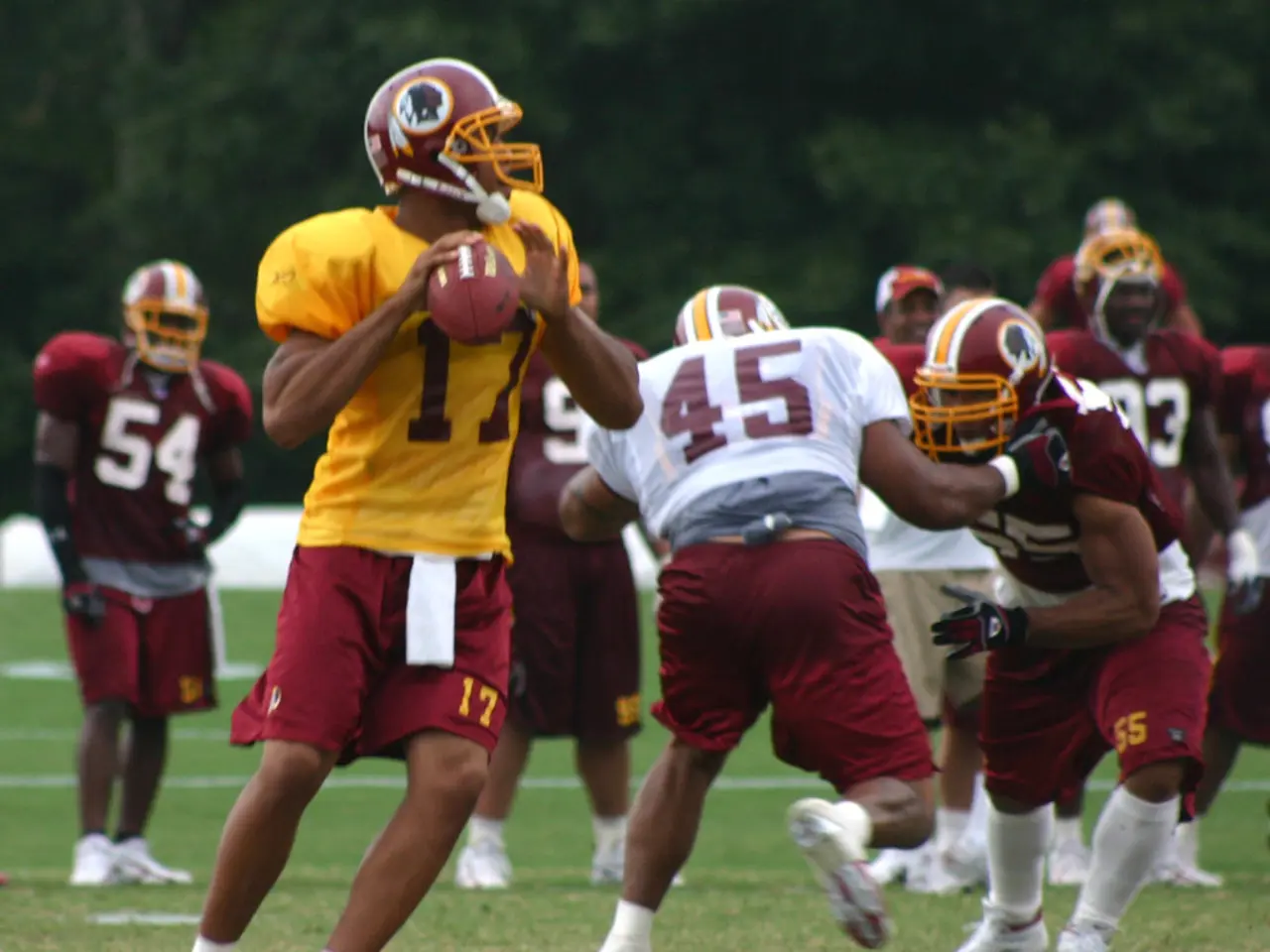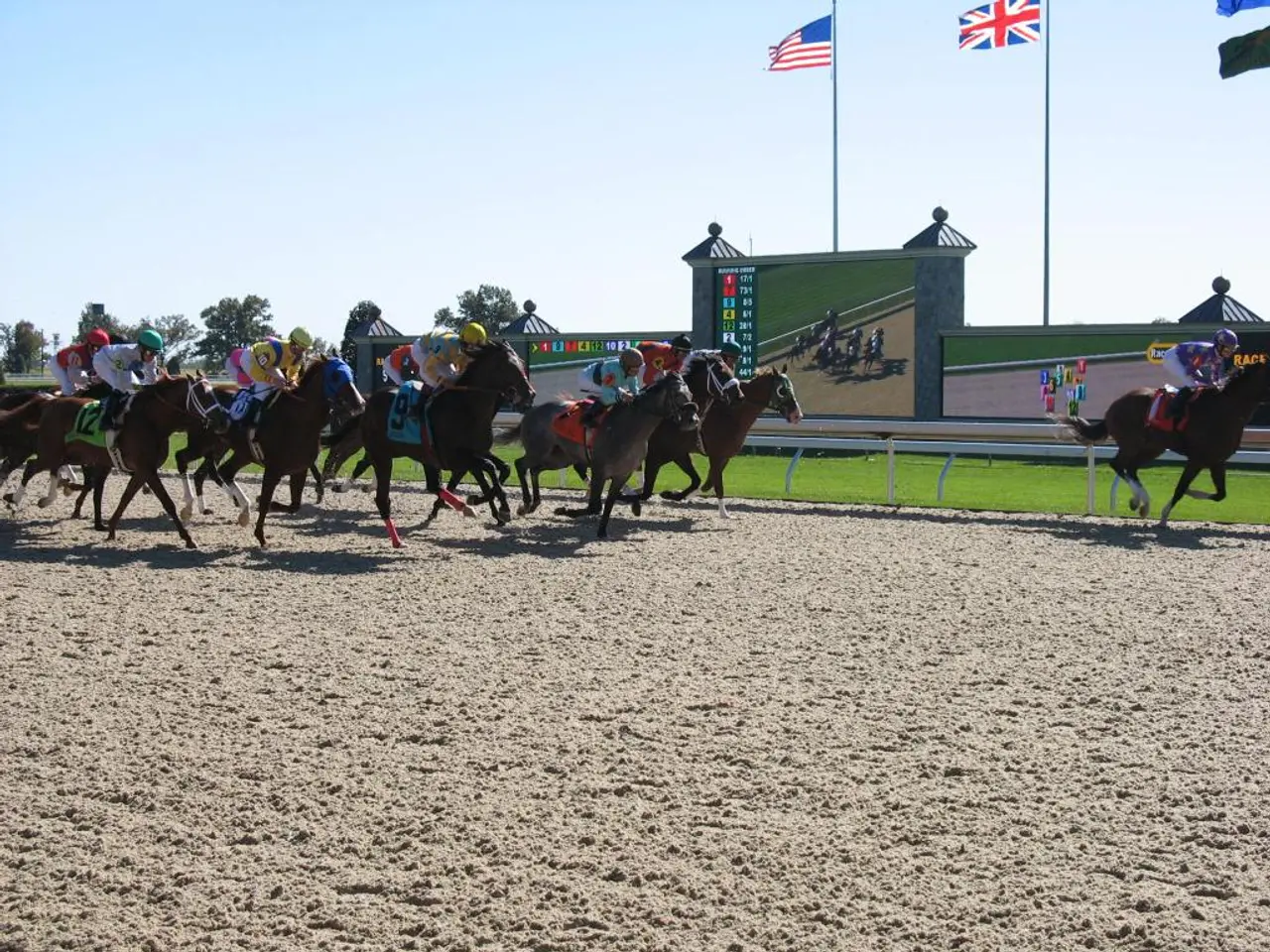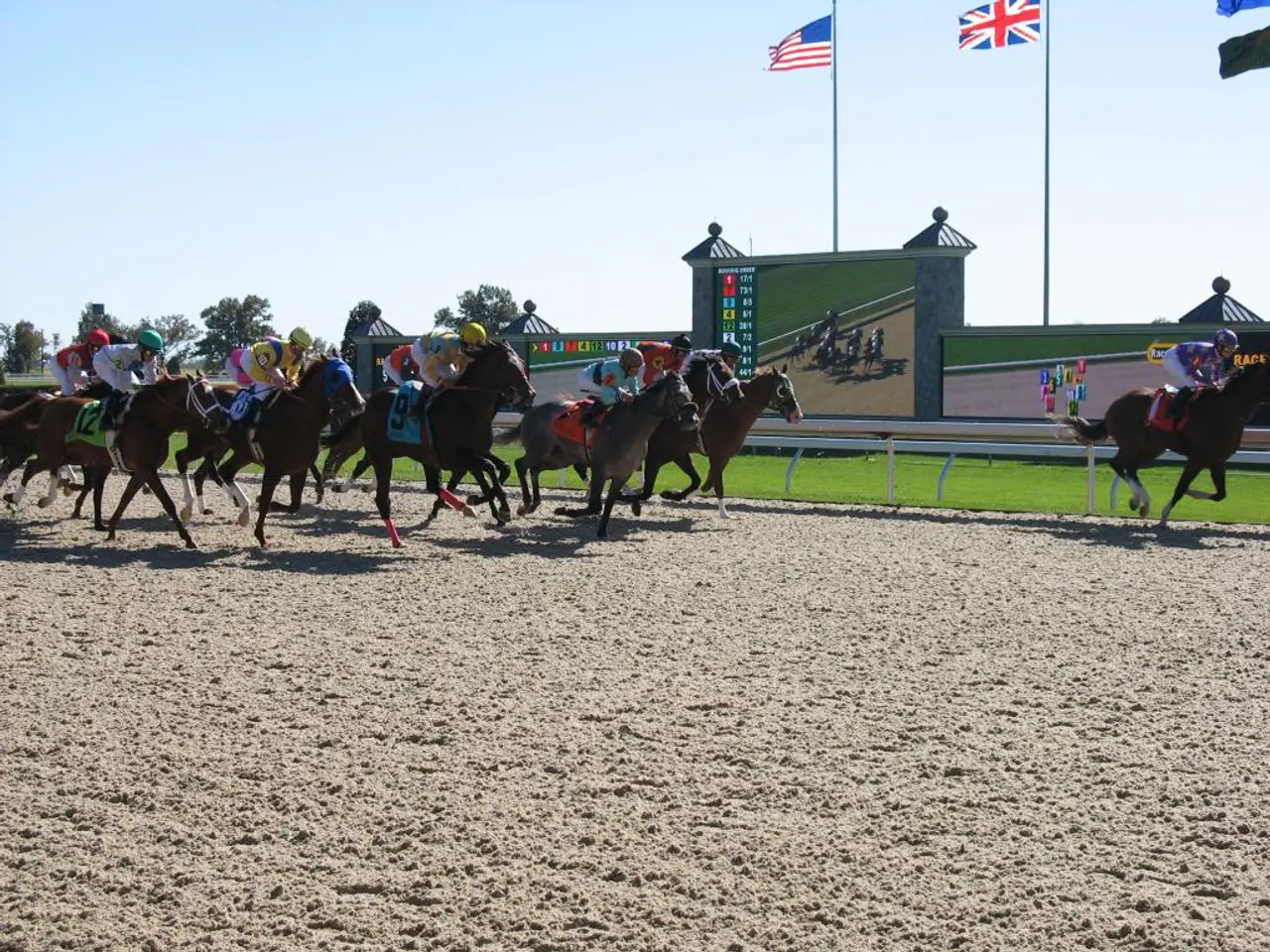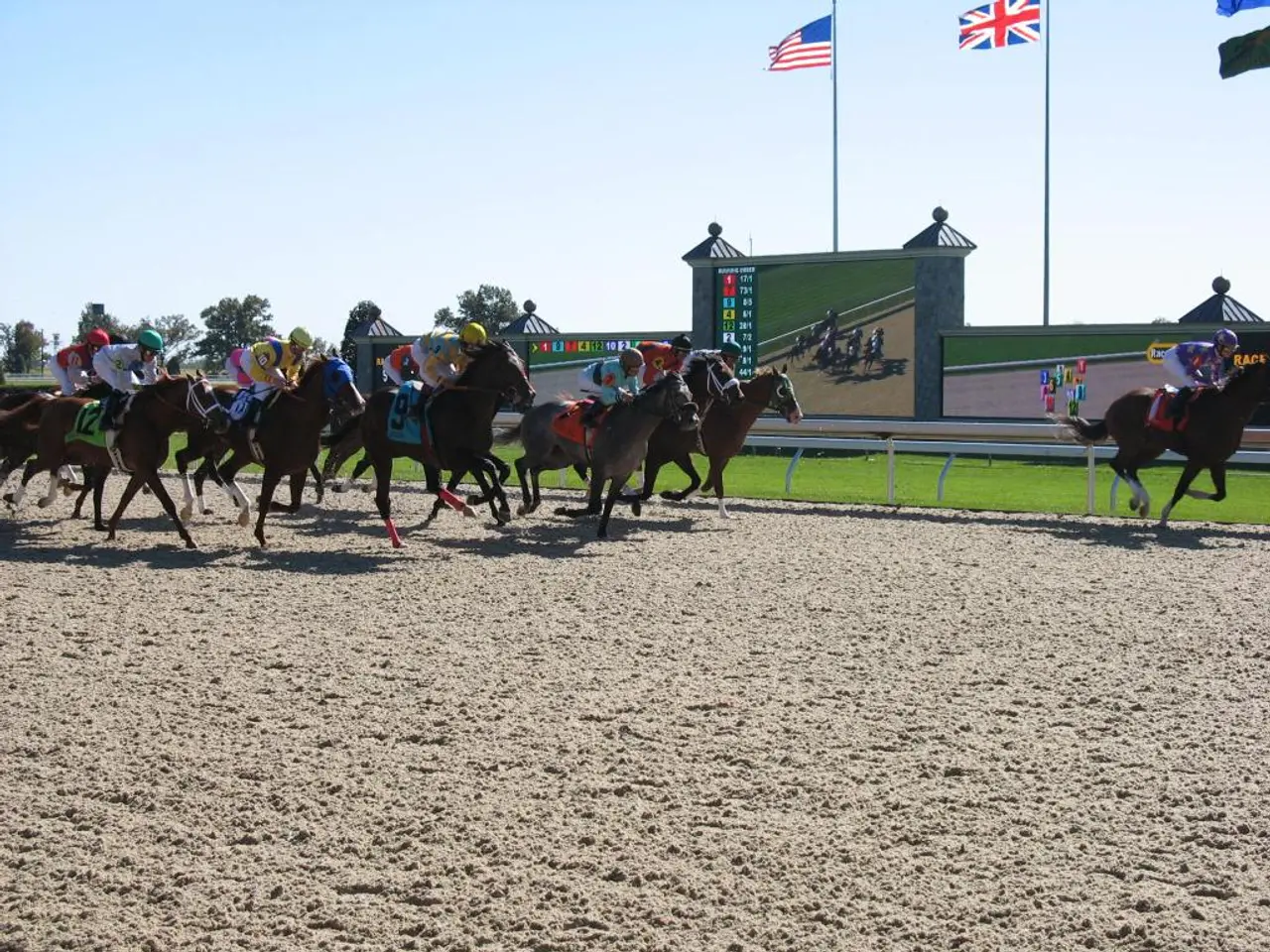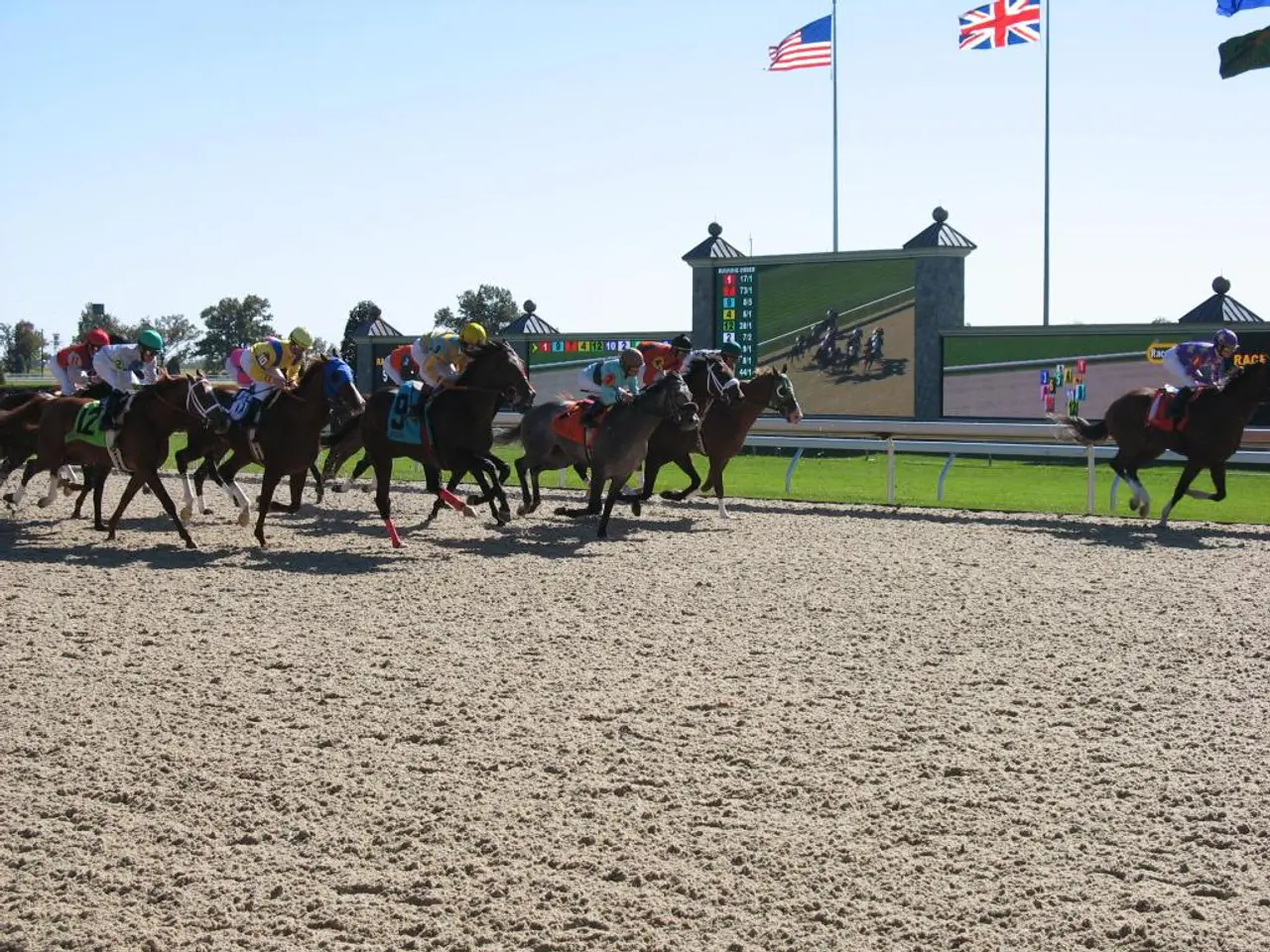Understanding the Mechanics of American Football
The Professional American Football Field: A Comprehensive Overview
The professional American football field, a staple of sports in the United States, measures exactly 120 yards in length, including two 10-yard end zones [2][3][5]. This standard size is used for various professional and collegiate games. To convert these measurements into feet, the field is 360 feet long and 160 feet wide [5].
The field is adorned with essential components such as yard lines, hash marks, end zones, goalposts, sidelines, and field markings. Additional features include seating, lighting, sound systems, scoreboards, and security and safety measures [4]. Some stadiums may also boast advanced video boards, domed roofs, or movable fields for an enhanced fan experience.
The Essential Components
Equidistant lines marked across the field, known as yard lines, help measure distances. Hash marks, short lines that either extend the yard lines or mark specific areas, are also present. The end zones, the areas at each end of the field where points can be scored, are marked by goalposts. The sidelines, the boundary lines that mark the sides of the field, and field markings, including lines, logos, and other markings, are all part of the game.
The Game's Equipment
The most essential piece of equipment in a football game is the ball, which is handmade by Wilson Sporting Goods Co. The ball consists of an inflated, polyurethane bladder placed in cowhide covering and laced with gridcord material. The ball weighs between 14 and 15 ounces and has a lengthwise circumference of about 28.5 inches and a width-wise circumference of about 21.5 inches in the middle of the ball [1].
The Officiating Crew
A football game consists of three teams, with the third team being the officiating crew. The officiating crew consists of six men, each with distinct responsibilities. The referee, the head official on the field, is responsible for giving signals and serving as the final authority on rule interpretation. The umpire rules on players' equipment and conduct, while the line judge keeps time during the game and backs up the head linesman on line-of-scrimmage calls. The field judge, the back judge, and the side judge each have specific responsibilities related to the players and calls they are responsible for making [6].
The Scoring System
A touchdown is awarded 6 points, an extra point is awarded 1 point, a two-point conversion is awarded 2 points, and a field goal is awarded 3 points. After scoring a field goal or touchdown and completing the extra point or two-point conversion attempt, a team must kick the ball to the opposing team, except on a safety [7].
The Rules of the Game
During a football game, a team receives a kickoff at the beginning of each half and after the other team scores. In American football, the down-and-distance system is used. Each time a team takes possession of the ball, it is given a set of four downs, or attempts, to move the ball 10 yards. If the defensive team stops the offensive team from getting 10 yards, the offensive team free-kicks, or punts, the ball to the other team. If the offensive team fails to advance the ball 10 yards in four downs, it surrenders the ball to the other team [8].
A safety is awarded 2 points and the team that scored the safety gets the ball on a free kick. If a player is tackled in his own end zone, the other team gets the ball through a free kick. A team can recover a ball dropped by the other team (fumble) or pick off a ball thrown by the other team's quarterback (interception) [9].
Each team is allotted two challenges per game. If the team loses the challenge, it loses a time-out and the official's call stands. If a team wins the challenge, it retains its time-out and the official's call is overruled. On close plays, a 10-yard-long chain is sometimes brought onto the field to measure the distance from the ball to the 10-yard mark for a first down [10].
Infractions and Reviews
Officials must memorize and be ready to call an infraction in a split second. An official signals an infraction by throwing a yellow flag. Some examples of reviewable plays include scoring plays, pass complete, incomplete, or intercepted, out of bounds, recovery of a loose ball, illegal passes, quarterback incomplete forward pass or fumble, runner rule down by contact, touching of a kick, number of players on the field [11]. When a play is challenged, the referee has 90 seconds to review the play at a field-level monitor to the side of the field [12].
Some examples of infractions include clipping, chop block, encroachment, excessive crowd noise, fair catch, intentional grounding, leaping rule, tuck rule, and "Emmitt Smith" helmet rule [13].
The Field's Surface and Location
The field is covered in grass or artificial turf and is set in an outdoor stadium. In some cases, professional football stadiums may have additional features such as domed roofs (for indoor conditions), movable fields, or advanced video boards for enhanced fan experience [4].
References: 1. The NFL Football 2. NFL Rulebook 3. NCAA Football Rules 4. Stadium Design 5. Conversion Factors 6. Officiating Roles 7. Scoring System 8. Down-and-Distance System 9. Safety and Free Kick 10. Challenges and Timeouts 11. Replay Review 12. Instant Replay System 13. Common Infractions
In the world of American football, particularly the NFL, the sport is closely linked to other professional and collegiate games, all using the standard field size of 120 yards, or 360 feet long and 160 feet wide. This field is adorned with essential components such as yard lines, hash marks, end zones, goalposts, sidelines, and field markings, making it suitable for the fast-paced game of football.
While the mighty stadiums may boast advanced video boards, domed roofs, or movable fields, the real star of the show is the football itself, handmade by Wilson Sporting Goods Co. Weighing between 14 and 15 ounces, it consists of an inflated, polyurethane bladder placed in cowhide covering and laced with gridcord material, adapting perfectly to the professional American football field in the United States.
